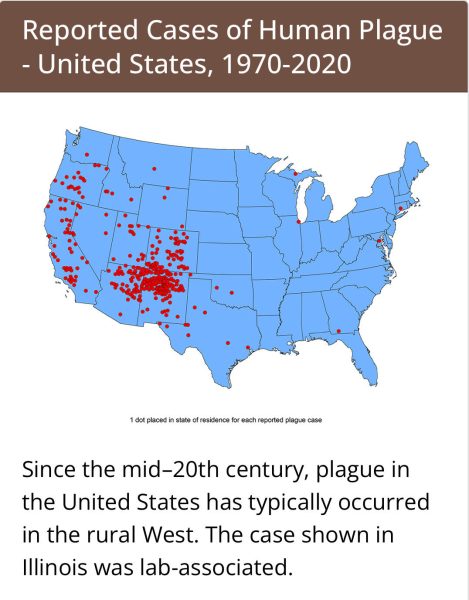You may have heard the news from a few weeks ago, about a cat that gave its owner the plague, but now for the first time since 2020, the disease has taken a life. Is this something to worry about?
What Is The Plague?
The plague is a disease from the bacteria, Yersinia pestis, that affects mammals, including humans. It claimed millions of lives in Europe throughout the Middle Ages, but modern antibiotics are effective in treating it. Cases mostly occur in parts of Africa since the 1990’s, and rural areas are more prone to the illness rather than cities.
Recent Transmission And Statistics
On March 9th the first fatal case of the plague was reported since 2020. A man from Lincoln County New Mexico had died after being hospitalized for the disease; however little information has yet to be released. The last death of the Plague was back in 2020 which also happened in the state. 
3 weeks prior, someone from Deschutes County Oregon was likely infected from their cat. This is the first confirmed case for the state since 2015.
According to the Center for Disease Control (CDC), In recent times, an average of 7 cases of the plague are reported across the nation each year. Half of these cases happen within people aged 12-45. According to the World Health Organization (WHO), the mortality rate of the disease sits around 8-11%, which is down from 66% from 1900-1941.
The CDC has cited two common ranges of the United States where most cases of transmission occur. The first being Northern New Mexico, Northern Arizona, and Southern Colorado. The second region is California, Southern Oregon, and far Western Nevada.
Fortunately, no cases of the plague in humans have been reported in the state of Massachusetts since 1970, and, in fact, only one case in the entirety of New England has occurred since 1970, which was in Connecticut.
What Are Symptoms?
According to the CDC, symptoms of the Plague depend on the form of exposure, the 3 most common are Bubonic, Septicemic, and Pneumonic.
The Bubonic Plague can take 2-8 days to incubate, and patients harbor systems of fever, headache, chills, weakness, and one or more swollen lymph nodes. This form makes up 80% of American cases since 1970, and are normally caused from the bite of an infected flea. This is also the same type of plague that caused the Black Death that killed millions in 14th century Europe.
Septicemic Plague has patients who develop fever chills, extreme weakness, abdominal pain, school, and bleeding into the skin and other organs. Tissue may turn black and die off, especially fingers, toes, and the nose. This form can occur as the first symptom of the plague, or be developed from untreated bubonic plague.
Pneumonic plague takes 1-3 days to incubate, symptoms include fever, headache, weakness, and a rapidly developing pneumonia that causes shortness of breath, chest pain, cough, and even blood or watery mucus. This is the most serious form, and is the only type that can spread from person to person via droplets.
Transmission and How to Protect Yourself and Pets
Flea bites are the most common form of transmission, usually from rodents which find other sources of blood if the rodent was to die. Fleas are most likely to bite when visiting areas where recently deceased infected rodents died. Dogs and cats may bring these fleas into your home. Exposure to these bites can lead to bubonic or septicemic forms of the disease. Exposure to tissue or bodily fluids of infected animals is best to be avoided as well. 
The disease can still be spread from person to person, but only via droplets in people with the pneumonic form of the disease, and not the bubonic or septicemic forms.
Cats are more susceptible to the disease than dogs are, but it’s important to treat your pets for flea control regularly and not allow them to freely roam, especially in regions susceptible to the plague.
According to the Merck Veterinary Manual, signs of the bubonic form of the disease, which is the most common, in cats usually include: fever, loss of appetite, lethargy, and an enlarged lymph node.
Ulcers in the mouth, skin abscesses (pockets of pus and infection), discharge from the eyes, diarrhea, and vomiting have all been documented as well.
Should I Fear The Plague?
With how rare both cases and fatalities are, being in the single digits annually for infections, and being limited to certain geographical regions of the nation there is nothing to fear for a Massachusetts pet owner.
Just ensure you or beloved pets do not play around with the corpses of sickly rats, and keep your dogs and cats checked for fleas regularly; you will probably have nothing to worry about.
Sources:


